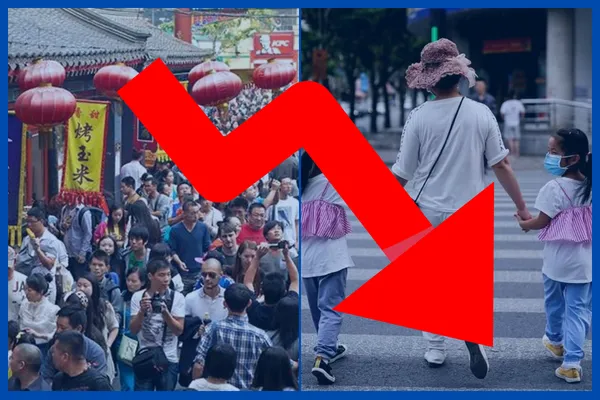
China’s Capital Reports a Population Drop
For the first time in 19 years, Beijing sees a population drop. As the country released its official statistics, all eyes were on the data and the negative growth in population. Let us look at the data and why China is witnessing a population decline.
What do the latest statistics say?
According to the latest official release, Beijing reported 5.72 deaths per 1,000 people, while the birth rate fell to 5.67 births per 1,000 people. With a higher death rate than the birth rate, Beijing’s population witnessed a decline in its overall population. This is the first time China’s urban hub has declined since 2003.
What are the reasons for the drop in population?
Changing Patterns of Family
Xiujian Peng, a researcher at the Centre of Policy Studies at Victoria University, Australia had written a brilliant article highlighting how China is registering a low TFR (total fertility rate). The TFR in 2021 was 1.15, which is below the replacement rate of 2.1.
Total fertility rate (TFR) is a demographic term used to measure the average number of children born to a woman during her reproductive years.
Peng writes, “the slide is because three years of strict COVID restrictions reduced both the marriage rate and the willingness of young families to have children.”
Low Birth Rates and China’s Draconian ‘One-Child Policy
Low birth rates have become a growing concern for many countries around the world. A low birth rate means that there are fewer babies being born than there are people dying, resulting in a decline in population over time.
China’s one-child policy was a government-imposed birth control policy that was in effect from 1979 to 2015. The policy was designed to limit population growth, as China was facing a rapidly increasing population that was straining the country’s resources. Under the policy, each couple was allowed to have one child only, and those who violated the policy faced fines and other penalties. The one-child policy had a significant impact on China’s population. It resulted in a decline in the birth rate, which led to a reduction in population growth.
In 2015, the Chinese government announced that it was ending the one-child policy and allowing couples to have two children. The move was aimed at addressing the country’s ageing population and promoting economic growth.
However, as Peng writes, the women were unwilling to have children and were resistant to the incentives that were offered after the end of the restrictions.
She elaborates this by saying, “One theory is that the one-child policy got them used to small families. Other theories involve the rising cost of living and the increasing marriage age, which delays births and dampens the desire to have children.”
Growing Deaths
Covid has been a major reason for the high death rate in China. With a death rate of 7.37 deaths per 1,000 last year and an average of around seven deaths per 1000 since the past few years, the decline in the overall population was bound to happen.
This is worrisome for a country like China which is currently battling to increase its economic growth, deal with the after-effects of the pandemic and is locked in a cold war with the United States of America.
Like this post?
Register at One World News to never miss out on videos, celeb interviews, and best reads.








